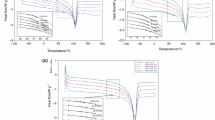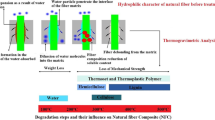Summary
In the TG analysis of the bio-composites, their thermal stability was found to slightly decrease and the ash content to increase as the lignocellulosic filler loading increased. This is a logical consequence of the lower thermal stability of the lignocellulosic filler compared to that of the matrix polymer. The dispersion and interfacial adhesion between the lignocellulosic filler and thermoplastic polymer were important factors affecting the thermal stability of the composite system. In order to improve their compatibility and interfacial adhesion, the incorporation of a compatibilizing agent into the lignocellulosic material-thermoplastic polymer composites is recommended. In the TMA analysis, the thermal expansion of the composites was found to decrease with increasing filler loading and incorporating compatibilizing agent. Lignocellulosic filler is a suitable material for preventing the thermal expansion of the composite materials caused by atmospheric changes.
Similar content being viewed by others
Author information
Authors and Affiliations
Rights and permissions
About this article
Cite this article
Yang, HS., Wolcott, M., Kim, HS. et al. Thermal properties of lignocellulosic filler-thermoplastic polymer bio-composites. J Therm Anal Calorim 82, 157–160 (2005). https://doi.org/10.1007/s10973-005-0857-5
Issue Date:
DOI: https://doi.org/10.1007/s10973-005-0857-5




